Running Everest
Feeling fat and unfit but aspiring to do something ‘magnificient’, author and adventurer Alice Morrison signed up for a six-day ultra marathon on the Everest Trail
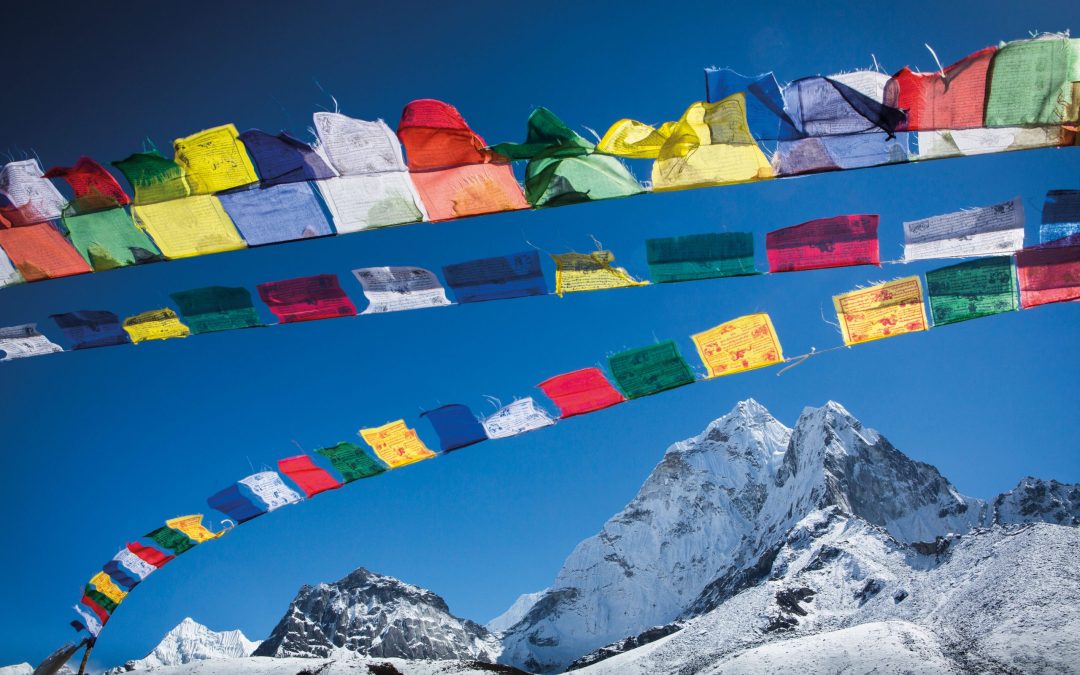
This was my moment. I came round the corner, out of the woodland with my heart pumping hard and my breath coming short because of the high altitude and there, silhouetted against a cobalt sky, was the towering, ice-white peak of the world’s highest mountain, Everest. I savoured it… ‘I’m running round Everest,’ I thought. Tears welled but didn’t spill and I smiled as hard as I could between panting breaths, then dug in my poles and trotted on.
Six months before, I’d signed up for a challenge which, when I registered for it, I knew I couldn’t do; a 160km, six-day ultra marathon in the Himalayas with 15,000 metres of climbing – the Everest Trail Race (ETR).
I wanted to do something magnificent; that would force me to get really fit and pull me out of the lazy, rather greedy lifestyle I had embraced over the past year. I am not a good runner but ultras are as much about sheer grit as they are about gazelle-like legs, and I am a determined person.
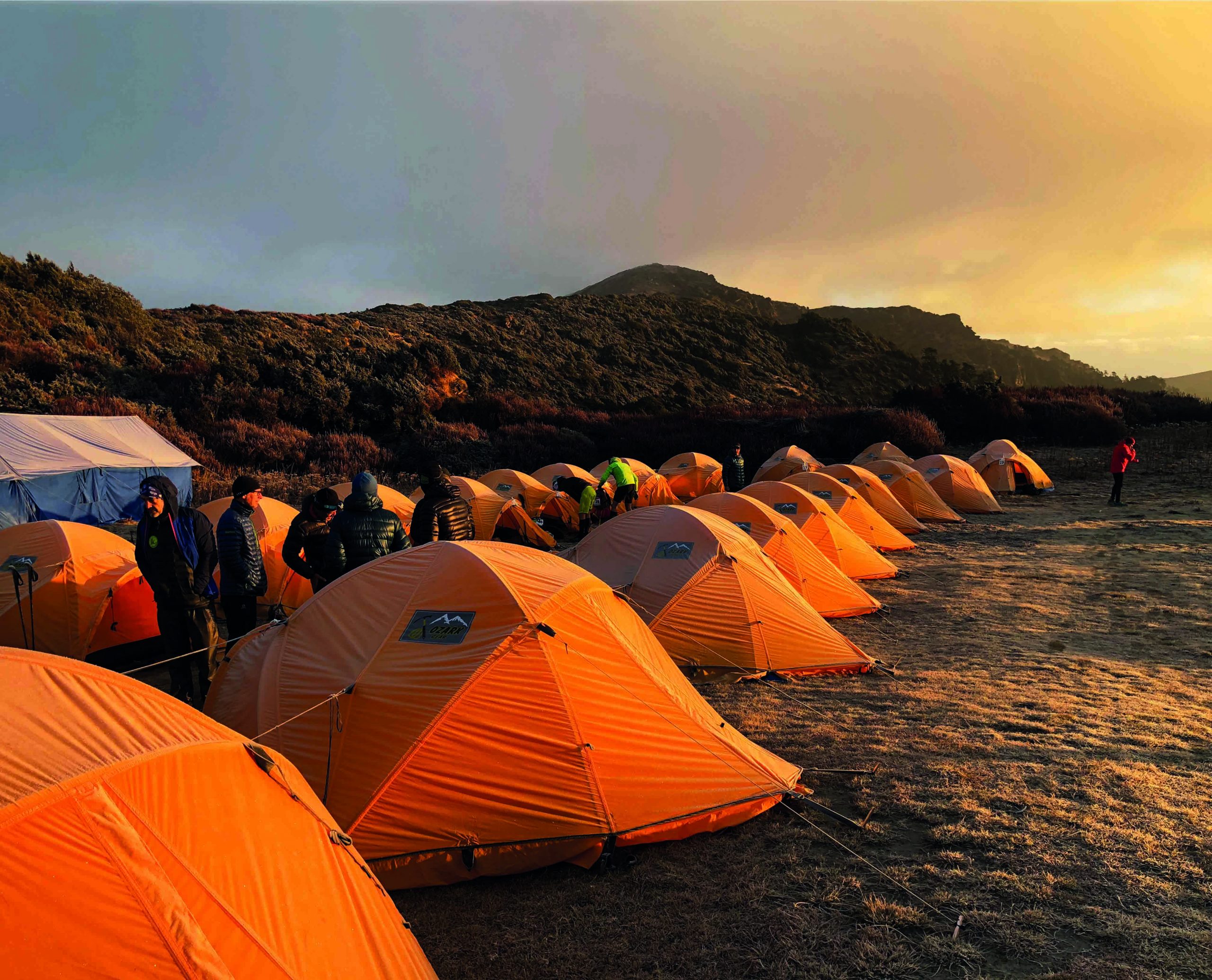
The first camp
To accomplish this goal I’d set myself, I knew I had to take drastic action. I moved from my home on the beach in Essaouira in Morocco to a hamlet above Imlil, in the Atlas Mountains, so I could live at altitude to habituate my body to itand train on the peaks. I’m so glad that when I set out I had no idea how hard it would be. It’s definitely better to be positive and optimistic, then realise the full horror of what you’ve done when it’s too late and you have no choice but to carry on!
Living in Imlil was wonderful in many ways, but there were some things I found difficult. In Essaouira, I had good foreign friends and Moroccan friends, so got to speak my own language and Arabic. But, in the family compound in the village, most of the women speak Tashlaheet, a Berber language, because they didn’t go to school and learn Arabic. I had to start from scratch so conversations were limited. Although I was showered with affection by my lovely neighbours, I felt isolated. A high point of each day was when Al Hajja, who is 90, came into the house with a present of a pear or peach and to teach me some new words. Then, we would sit in silence and she’d hold my hand for a while. That human touch was precious.
Where there’s a hill, there’s a way
The other thing that was difficult was forcing myself out to train when I was so unfit, and doing it alone day after day. It was embarrassing to leave the compound in my Lycra when the local women cover themselves entirely, and somehow even more so when I was overweight and felt like a bit of a fraud. Then, there was the sheer effort of training – up the hill, down the hill, up the hill, down the hill. You get the idea. One thing that helped was hiring a guide once a week and going on a long hike. It meant I was doing useful training, had company and was exploring undiscovered places. The other thing was getting friends to join me from time to time. Those were high days for me, when I got to share the beauty of the place with other people.
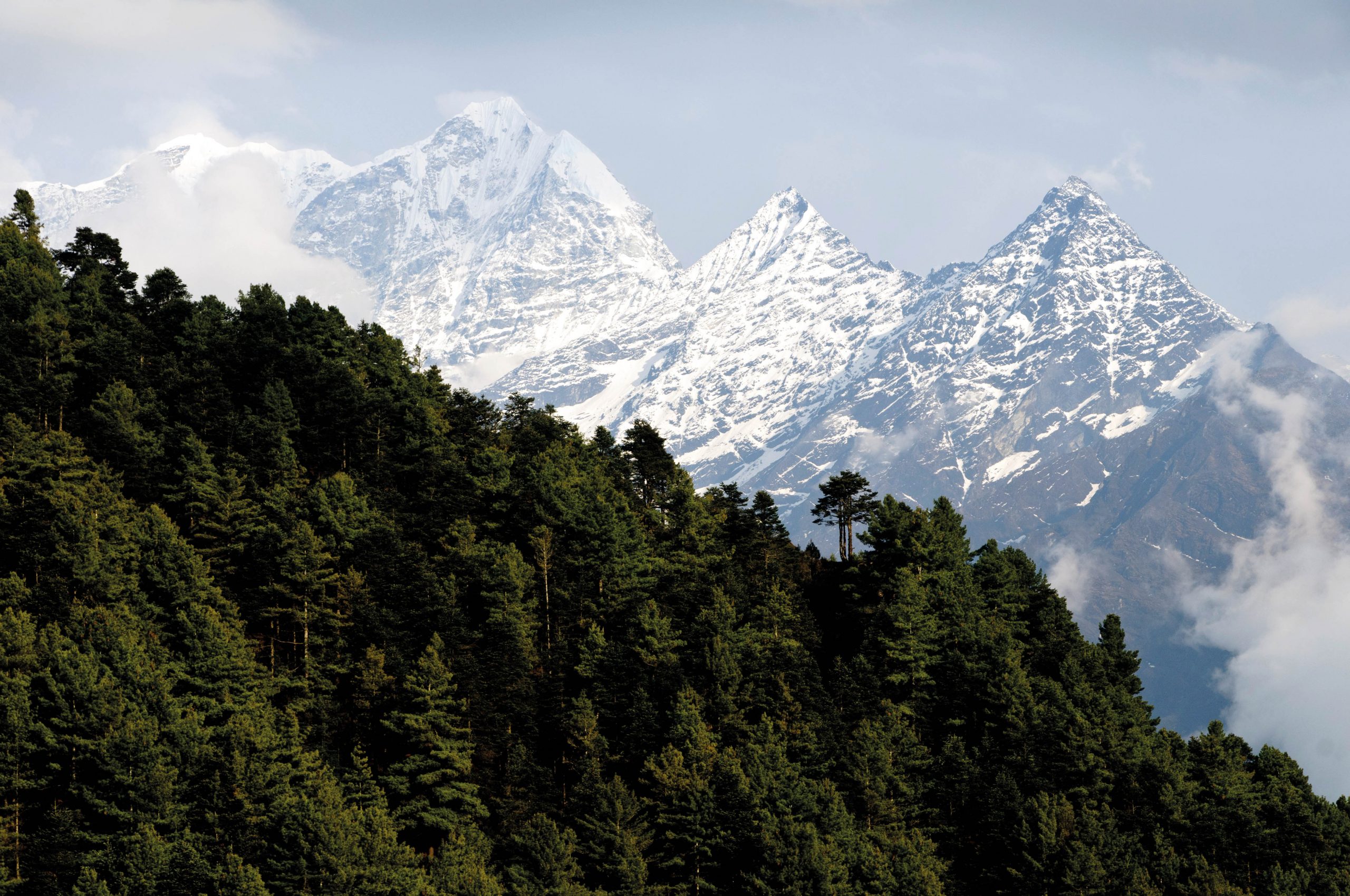
Everest looming large in all its majesty
The months passed in a flash, and I felt I was just beginning to make progress in terms of fitness, when it was time to take the flight to Kathmandu in Nepal. It’s a crazy place of contrasts: crowded and full of beauty jostling with dirt, and exquisite handicrafts squeezed in beside knock-off North Face kit.
An eight-hour bus ride winding up mountains, with the poor person beside me throwing up the whole way, took us to our first camp. Rows of orange tents, with two shower tents, two toilet tents and – most important of all – the mess tent, lay in the mists of the valley. Lou, a gorgeous, tall, athletic blonde and all-round good egg, was with me in tent 17.
Standing at the start line, I looked at the lean, mean, racing machines surrounding me and thought, ‘Oh, my Lord, I do not look like these people. In fact, I look like a completely different species.’ And that was the last negative thought I allowed myself. My goal was to complete this race. If I couldn’t do it within the cut-off time, I’d be disqualified and recorded as a DNF (did not finish). If I missed two cut-offs, I’d be stopped from taking part and taken back to Kathmandu. I had spent months working towards this. I’d changed my life for it. I’d told everyone I was doing it. I had to finish.
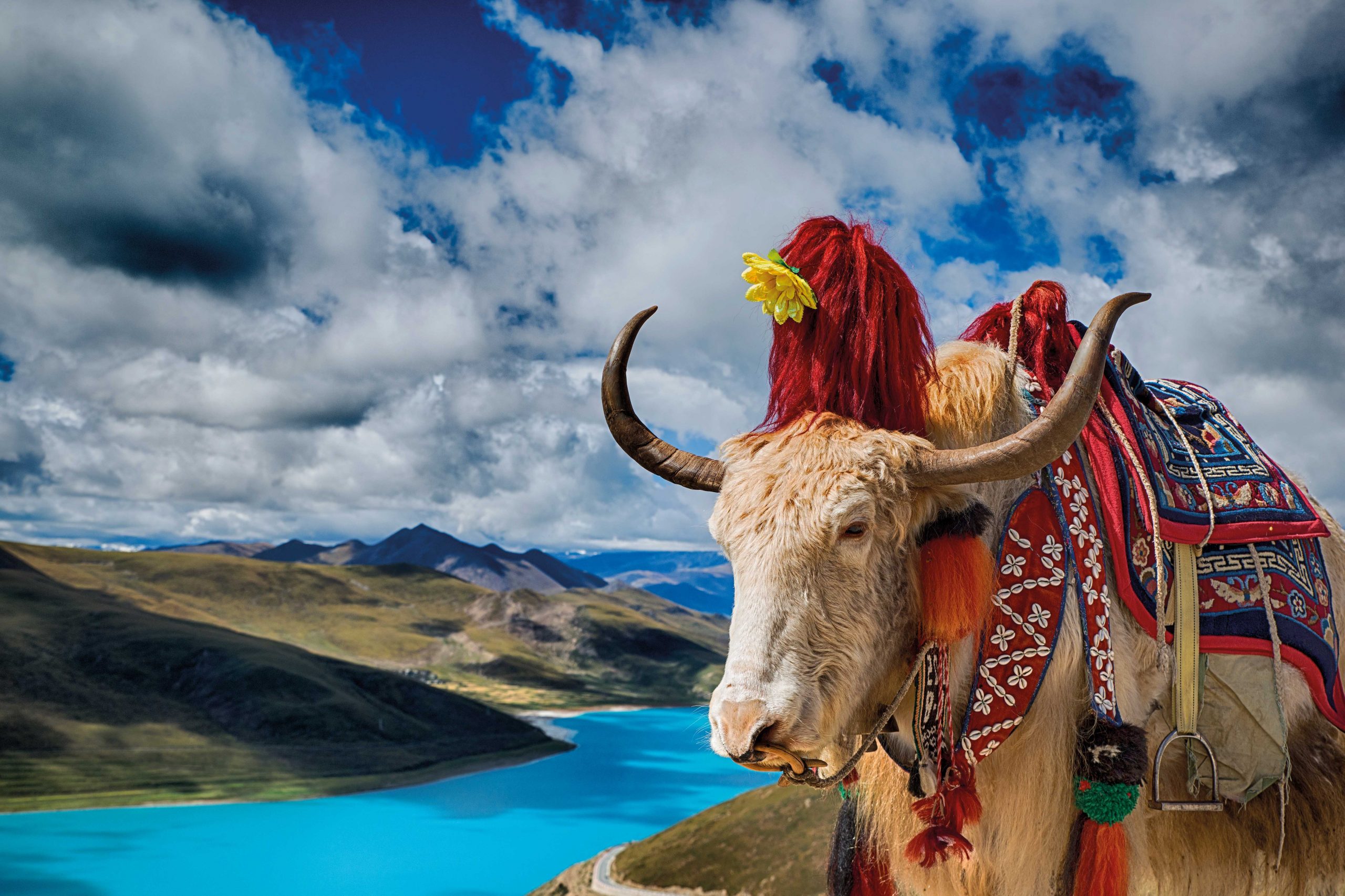
Yaks are a common sight en route, helping to transport goods at high altitude and draw wooden ploughs in fields
For the next six days, I gave my best. My mantra was, ‘Don’t stop, don’t stop. Run the flats. Run the downs. Don’t stop, don’t stop.’ That’s what I did. On my longest day, I was out for 12 and a half hours and in that time I stopped moving for 11 minutes. I focused on my goal. I was last every day but I came in within the time and that was a massive triumph for me. The other racers were hugely encouraging, giving me a standing ovation on one gruelling stage when I finally made it in. Lou was a rock star. She helped me get my pack off, sort out my water and made sure I was OK.
One thing penetrated through the concentration and the physical endeavour and that was the beauty of my surroundings. Lush, semi-tropical forest covered the slopes on the lower reaches, then gave way to snow on the highest peaks; flocks of red-breasted birds would explode from between the trees as I passed and, sometimes, I’d be engulfed by a scent like lilies as I trod on a flower underfoot. Meanwhile, the busy life of the Nepalis was going on all around us. There were men working the fields with wooden ploughs drawn by yaks and women hanging out their washing wearing colourful long dresses.
The final bittersweet few metres
The last day was a hard day. The skies were grey and we were in an area that was busy with hikers going up towards Everest base camp. Drizzle had made the rocks slippery and, now that an end was in sight, the path seemed to go on forever. Then, I saw one of the ETR guys, Raffa, standing above me on a rocky step. ‘You’ve got 50 metres to go, Alice.’ Fifty metres! In that moment, I’d expected to feel joy, but I felt total exhaustion as I let the iron grip I’d kept on my mind slip. I had done it.
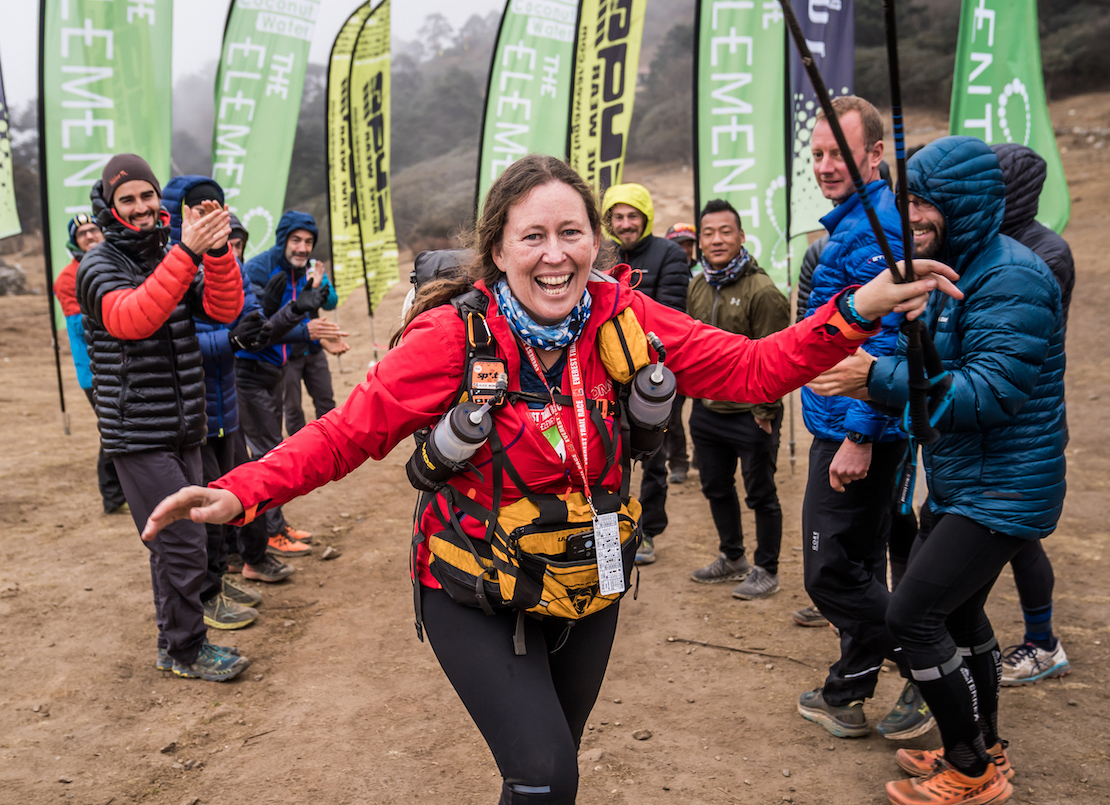
A smiling Alice Morrison finishes the fifth stage of the race, met by an encouraging welcoming committee
The joy came later, when the enormity of the challenge and the achievement sank in and I had time to think about what I’d experienced: the comradeship with the other runners and the ETR team, and that mountain that reached the sky and warmed my soul. It was, in the end, truly, madly, deeply magnificent.
Need to know
- If you would like to run, see everesttrailrace.co.uk.
- For fantastic trips to the Himalayas that don’t involve an ultra marathon, or if you would like to experience life in the Atlas Mountains, check out the adventure offerings from Whereabouts Holidays at whereaboutsholidays.com.
- To find out more about ultra running, runultra.co.uk has training plans and tips for every level, including beginners.
- For more of my adventures, see my blog and website, alicemorrison.co.uk.
- For real insight into the Himalayas, I love mountaineer Chris Bonington’s book, ‘Ascent’ (Simon & Schuster, £20)
Images: Steele Burrow/Aurora Photos/Getty Images
READ MORE
Best running shoes for women
Best trail running shoes for women
Best road running shoes for women









